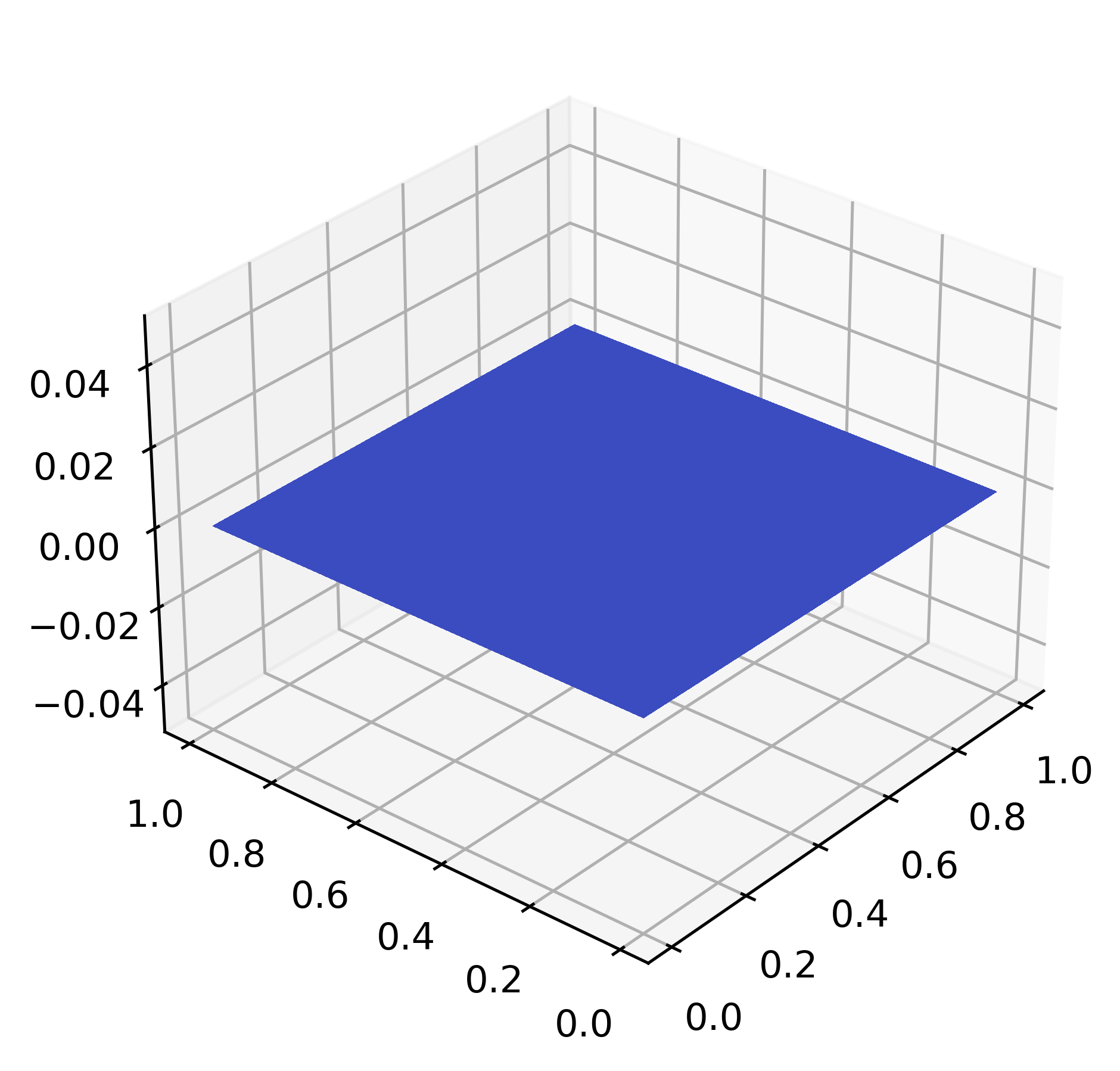2D single-species advection-reaction-diffusion#
This problem focuses on the following 2D PDE:
Initial conditions: \(\phi(x, y, 0) = 0\)
Default settings:
\(u = 0.5 \cos(\pi/3), v = 0.5 \sin(\pi/3)\)
\(D = 0.001\), \(\sigma = 1\)
\(f(x, y, t) = 1\)
Domain is unit square \([0,1]^2\) with homogeneous Dirichlet BC
\(u, v, D, \sigma\) can be customized via the problem constructor (more below)
Mesh#
python3 pressio-demoapps/meshing_scripts/create_full_mesh_for.py \
--problem advdiffreac2d_s<stencilSize> -n Nx Ny --outDir <destination-path>
where
Nx, Nyis the number of cells you want along \(x\) and \(y\) respectively<stencilSize> = 3 or 5 or 7: defines the neighboring connectivity of each cell<destination-path>is where you want the mesh files to be generated
C++ synopsis#
#include "pressiodemoapps/advection_diffusion_reaction2d.hpp"
int main(){
namespace pda = pressiodemoapps;
const auto meshObj = pda::load_cellcentered_uniform_mesh_eigen("path-to-mesh");
const auto inviscidScheme = pda::InviscidFluxReconstruction::FirstOder; //or Weno3, Weno5
// A. constructor for problem using default values
{
const auto probId = pda::AdvectionDiffusionReaction2d::ProblemA;
auto problem = pda::create_problem_eigen(meshObj, probId, inviscidScheme);
}
// B. setting custom coefficients
{
using scalar_type = typename decltype(meshObj)::scalar_t;
const scalar_type ux = 0.2;
const scalar_type uy = 0.8;
const scalar_type diff = 0.01;
const scalar_type sigma = 1.5;
auto problem = pda::create_advdiffreac_2d_problem_A_eigen(meshObj, inviscidScheme,
ux, uy, diff, sigma);
}
}
Python synopsis#
import pressiodemoapps as pda
meshObj = pda.load_cellcentered_uniform_mesh("path-to-mesh")
scheme = pda.InviscidFluxReconstruction.FirstOrder # or Weno3, Weno5
# A. constructor for problem using default values
probId = pda.AdvectionDiffusionReaction2d.ProblemA
problem = pda.create_problem(meshObj, probId, scheme)
# B. setting custom coefficients
ux, uy, myD, sigma = 0.1, 0.5, 0.001, 1.5
problem = pda.create_adv_diff_reac_2d_problem_A(meshObj, scheme, ux, uy, myD, sigma)
Notes:#
Important
Currently, for this problem the viscous schemes is fixed such that it yields a second-order viscuous scheme.
Sample Solution#
Representative plot at \(t=0\) (left) and \(t=3\),
using a 50x50 mesh with Weno5 and RK4 time integration with \(dt = 0.01\),
and default values for the physical coefficients:

